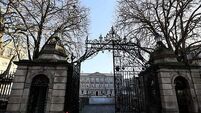Bloody secrets of Vinegar Hill revealed

They have also located a prison on the site, as well as flintlock pistols and muskets, swords, and musketballs which have given them greater insight into how the bloody Battle of Vinegar Hill in Co Wexford unfolded.
Archaeologist Ronan O’Flaherty, chairman of the Vinegar Hill Research project, said the four-year investigation was the most intensive examination of any battlefield site ever undertaken in Ireland, looking at its history, geography and folklore.
The project was backed by Wexford County Council and conducted by a team of volunteers who were able to use technology to amass a significant amount of information without the need for major excavation.
Archaeologists used a system of aerial photography known as Lidar, which allows surface vegetation to be stripped away providing a better picture of what lies on and beneath the surface.
The team also used geophysics, which provided further evidence from ground-penetrating X-rays.
Dr O’Flaherty said very large pits have been found on the north side of the hill. A large number of women, children, and elderly people, possibly numbering up to 2,000, had gathered on the hillside before the battle and were being protected by about 2,000 rebel forces.
“All the evidence suggests these [pits[ are mass burials and there are very likely more to be found,” said Dr O’Flaherty. Archaeologists were able to establish key phases of the battle through the position of musketballs and other weaponry.
“We have placed one of the most significant phases of the battle, the final assault on the hilltop when the crown forces swept forward to capture the rebel flag,” said Dr O’Flaherty. “At this stage, however, the main body of the rebel force had successfully retreated.
He said the pattern of musketballs in the fields surveyed indicates a firing line of Crown forces taking up position and discharging into what must have been a crowd of people fleeing towards the summit, “probably the non-combatants”.
Dr O’Flaherty said the pits have all been detected by geophysical investigation.












